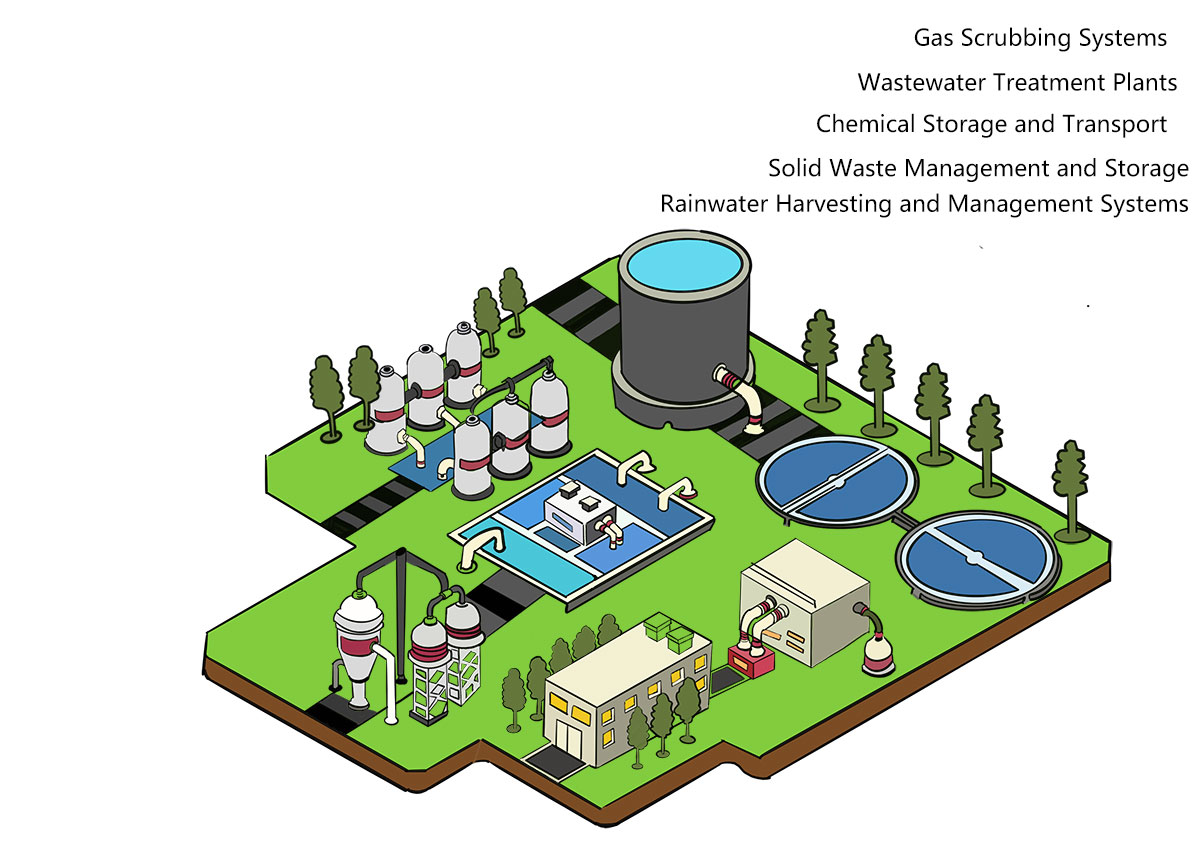Environmental Protection Facility

Gas Scrubbing Systems
In industrial emission control, pultruded FRP is often utilized to build components such as scrubber towers, ventilation ducts, and fans. These components are frequently exposed to corrosive gases and high temperatures. The ability of FRP materials to resist these harsh conditions ensures the operational integrity and longevity of air purification systems, making them indispensable in controlling industrial emissions.
Wastewater Treatment Plants
Pultruded FRP is extensively used in wastewater treatment for constructing reaction tanks, settling basins, filter beds, and piping systems that transport sewage. The chemical stability and corrosion resistance of FRP materials enable them to withstand the erosive effects of various chemicals and biomatter found in wastewater, thereby extending the lifespan of facilities and reducing maintenance costs. This application highlights the durability and cost-efficiency of FRP in harsh environmental conditions.
Chemical Storage and Transport
In facilities that handle chemical processing and storage, components such as chemical tanks, transport pipes, and pumps are often made from FRP. Using FRP materials reduces the risk of equipment damage and leaks caused by chemical corrosion, thereby enhancing safety and environmental compliance in chemical storage and handling operations.
Solid Waste Management and Storage
Solid waste facilities, including transfer stations and waste storage containers, can benefit from the use of pultruded FRP. The material's high strength and resistance to corrosion make it ideal for storing and handling hazardous chemicals, corrosive substances, and regular waste, ensuring safety and environmental protection.
Rainwater Harvesting and Management Systems
Pultruded FRP is also used in rainwater collection and drainage systems to manufacture pipes, collection troughs, and grates. FRP components are adaptable to environmental changes and can withstand impacts from rainwater, sediment, and temperature fluctuations, while also reducing the overall weight of the system for easier installation and maintenance.




